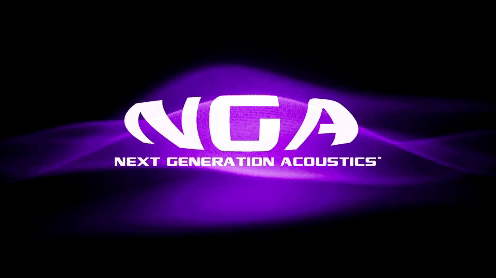The ABCD's of acoustic treatment
When it comes to acoustically designing a space we have broken it down into a simple ABCD approach.
A - Acoustic Panels
B - Bass Traps
C - Ceiling Baffles
D - Diffusion
Your desired acoustic environment can be achieved in virtually any space using a specific one (or combination) of these products.
Let's break each one of these types of treatments down and discuss the specific application and approach for using it.
A - Acoustic Panels

Acoustic panels are the most commonly used of these products and for good reason. With strategic placement and the right amount of room coverage - you can make a tremendous impact in the acoustical response of your room.
These work by absorbing sounds that are reverberating within your room. Each room will require a different amount/size/placement to get the best results. Your approach should depend on what you're trying to do within the room.
A larger room with high ceilings will require more and/or larger panels than a small room with a lower ceiling height. If you're wondering how to calculate how many panels you need for your particular space - We have created a resource section on our website to help guide you. If you're looking for a more specific approach, fill out our free room analysis form. Ideally you need to place your panels at the various "reflection points" within your room. A "reflection point" is essentially where the sound bounces off of the walls. Strategically placing your panels at the reflection points within your room will typically yield the best results.
B - Bass Trapping

Bass Trapping is considered an essential element in achieving great room acoustics. Particularly in square/rectangle rooms. Often times bass frequencies tend to "build" inside of a room (especially in corners) causing a skewed perception of the (bass) volume within that space. This is especially problematic if you are using the room for mixing and/or mastering music - as you will compensate for the heightened sense of bass frequencies by turning the bass lower in your mixes. This will also cause you to erroneously cut or boost low end frequencies in your eq bands during mixing/mastering.
C - Ceiling Baffles / Cloud Panels

Ceiling clouds and/or baffles are (typically larger sized) acoustic absorbers that are suspended from a ceiling. Clouds have many functional purposes. They can be placed over a drummer to control direct sound reflections coming from the cymbals/toms/snare. They can be used in an isolation room over the vocalist or acoustic instruments to increase sonic intelligibility, placed over a stage to control stage volume and most importantly can be used in a room where there isn't enough available wall space to achieve the desired acoustical response using wall panels alone. They are also commonly used when a room requires acoustic treatment but the interior design doesn't allow for panels on the wall. In a studio control room these are typically placed over the engineer's mixing/listening position (aka - "the sweet spot") It's important to note that sound interacts with every surface in a room - including the floor and ceiling. Typically the floor isn't treated because well – it's a floor. But treating the ceiling can combat frequencies reverberating vertically from the floor. For this reason alone ceiling treatments are tremendously important in improving the acoustic response inside your space.
D - Diffusion

Finally (D) is for Diffusion - which is last on our list, but certainly not least. Mathematically designed acoustical diffusion looks great and performs even better. Diffusers are most often designed using prime root equations to maximize scattering.
Diffusion helps by taming reverberation within a room while still keeping a "bigger" feeling within your space. Diffusers will allow sound waves to reverberate freely - but will break up & evenly disperse the reflections throughout the room. This drastically improves the acoustical properties because direct reflections (sound bouncing back in forth from a wall to the opposite wall over and over again) are what cause decreased sonic intelligibility when it comes to noise reverberating inside a room.
If you have any questions about any of these products feel free to send us an email at
Info@NextGenerationAcoustics.com or call us at (336) 684-0287
If you would like to know which products would work best for your room click the button below to fill out our free room analysis form and we will get back to you with a phone call and/or detailed email about which products you need for your space, why you need them and where to install them within your room.


